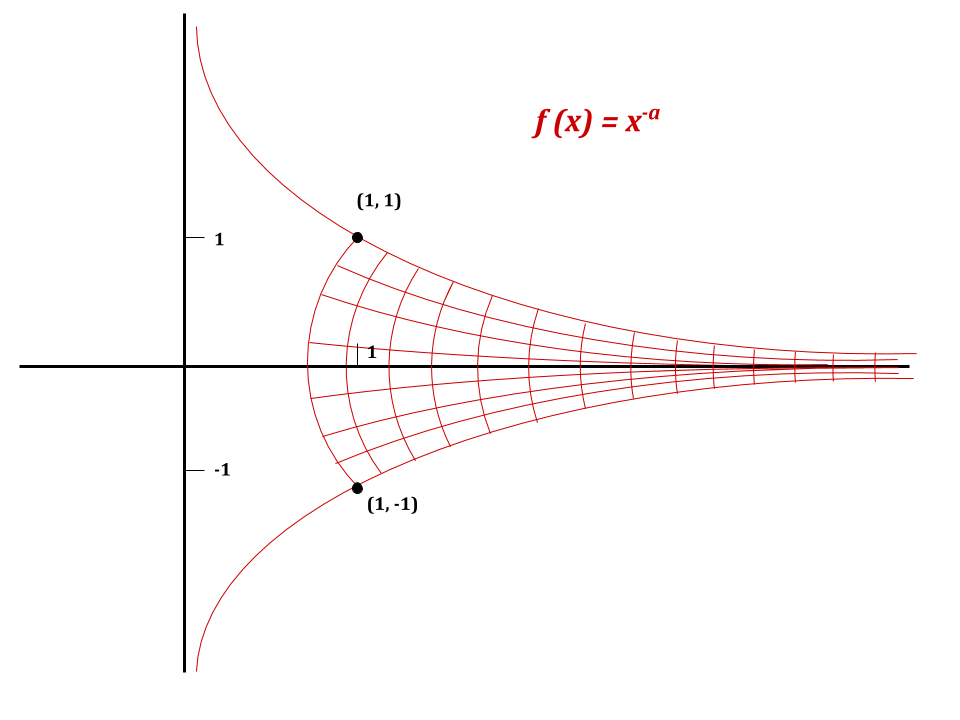Infinite Volume Or Finite Volume?
Rotate the curve drawn by the function , a positive real number, for , about the -axis, as so:

For which values of is the volume of the resulting solid finite?
Bonus: For the correct inequality, what is the volume in terms of ?
This section requires Javascript.
You are seeing this because something didn't load right. We suggest you, (a) try
refreshing the page, (b) enabling javascript if it is disabled on your browser and,
finally, (c)
loading the
non-javascript version of this page
. We're sorry about the hassle.
The area can be expressed as the area of an infinite number of discs, with 'height' Δ x , 'radius' x − a = x a 1 , and 'area' π x − 2 a Δ x . As Δ x → 0 , the limit is the improper integral
x → ∞ lim π ∫ 1 ∞ x − 2 a d x
Using the power rule for integration, the integral becomes
∫ x − 2 a d x = 1 − 2 a x 1 − 2 a = ( 1 − 2 a ) x 2 a − 1 1
When x = 1 , this is 1 − 2 a π . Now, in order for the volume to be finite, lim x → ∞ ( 1 − 2 a ) x 2 a − 1 1 must be equal to 0 , or
x → ∞ lim ( 1 − 2 a ) x 2 a − 1 = ∞
In order for that to occur, the exponent of x must be greater than 0 .
2 a − 1 > 0 ⟹ a > 2 1
Thus, a > 2 1 . Now, if this condition is satisfied,
x → ∞ lim π ∫ 1 ∞ x − 2 a d x = − 1 − 2 a π = 2 a − 1 π